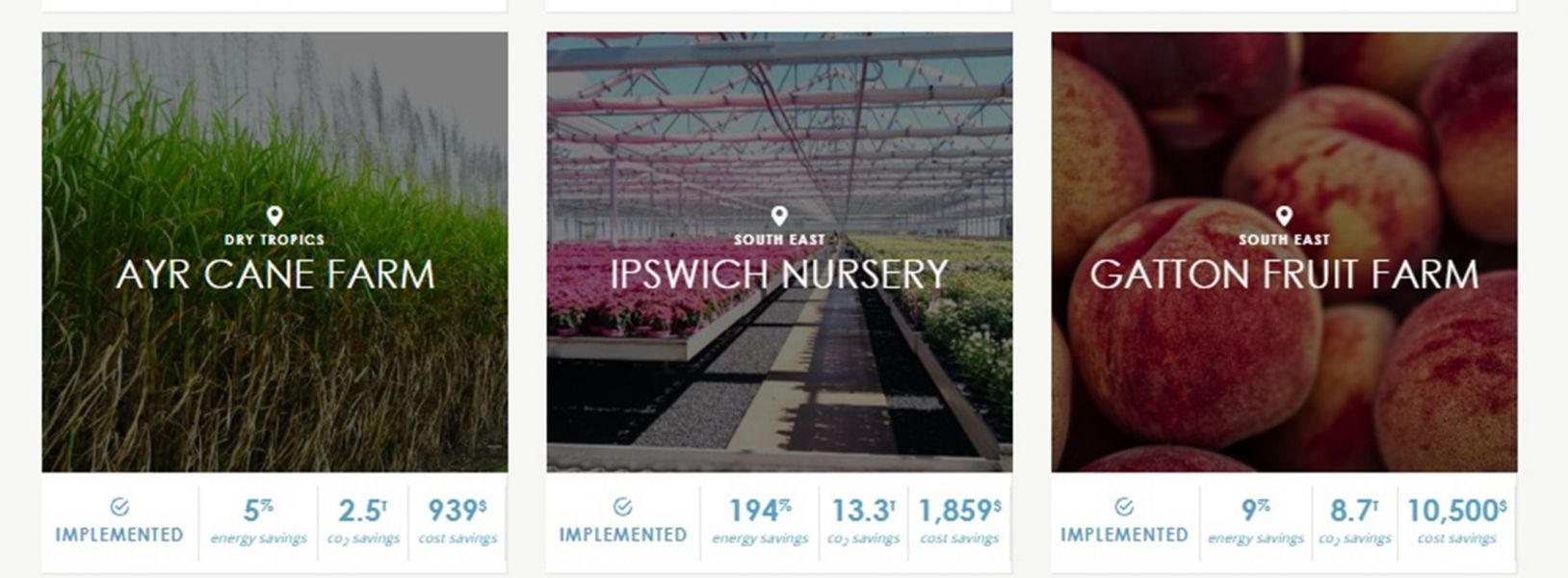Farmer participants in the QFF Energy Savers program have reported real savings after going ahead with the recommendations of their energy audits. These savings have been Measured and Verified (M&V).
We went back to 39 farms after they had implemented some of their energy audit findings to conduct Measurement and Verification assessments.
Farms are typically saving about 5% more energy than the energy audit had recommended. Farmers were making cost savings and productivity improvements, but the cost savings were not as high as the audit had recommended. Based on the M&Vs conducted, we consider that this is due to farms putting in slightly larger solar systems than had been recommended.
They are therefore off-setting more grid electricity but they are also exporting more power. The exported power has a lower value at the regulated Feed in Tariff Rate of 9.3 c/kWh which is less than the tariff rate when offsetting power at 27.949c/kWh on Tariff 20.
For example, a southeast Queensland nursery was recommended a 10kW Solar PV system. They installed a 13.2kW solar PV system with a 10kW inverter.
The audit estimated a reduction in grid electricity of over 14,000 kWh per year and after installing the system, the farm achieved a measured saving of over 16,000 kWh in the first year which is 16% more than estimated. The Audit estimated cost savings of nearly $3,400 per year and it was calculated that the farm saved over $1,850 which is a saving, though 45% less than estimated.
The M&V report identified a couple of causes for this. Firstly, the larger PV system as well as a higher solar irradiation than the baseline year (less cloudy days) increased the output. Secondly, whilst the system offset more grid power, it also exported more so the greater proportion of power export from the larger system, combined with a reduced solar Feed In Tariff in the reassessment year (2020/2021) contributed to a reduced cost saving.
The M&V report recommended adjusting operations where possible to utilise more solar power on site to increase the value of that Solar PV power.
Read more about the case study HERE.
There is an international protocol that sets out how M&V is to be conducted – the International Performance Measurement and Verification Protocol (IPMVP). M&V should include but is not limited to baselines, accurate data from a calibrated device and the calculations used to show true savings. It can cover savings from a single apparatus or whole of site. The Energy Efficiency Council of Australia has detailed information about what is involved in M&V and how it should be conducted HERE.
Read another article about measured and verified pumping and irrigation energy savings HERE.
See all of our Case Studies HERE and look out for the ones that are flagged ‘IMPLEMENTED‘ as some of them have also been M&V’d to give real data.

Subscribe to our Energy Savers e-news HERE.